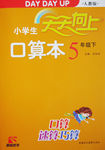��Ŀ����
�ڢ�� �� ��ѡ���⣬��35�֣�
���IJ��֣�д���������ڣ�����35�֣�
��һ�ڣ����ĸĴ�����10С�⣺ÿС��1�֣�����10�֣�
���±�����ŵ�ÿһ�о���һ���������ҳ��������������������
��1�����ж�һ���ʣ��Ѷ���Ĵ���б�ߣ������������ڸ����ұߺ�����д���ôʣ�
���������
��2������ȱһ���ʣ���ȱ�ʴ���һ��©�ַ��ţ���, �ڸ����ұߺ�����д���üӴʡ�
��3�����д�һ���ʣ��ڴ��Ĵ��»�һ���ߣ��ڸ����ұߺ�����д��������Ĵʡ�
| As is know, when senior students graduate from school, most of their textbooks are thrown away, which are still in a good condition. What a waste it is! I quite agree to the suggestion we should recycle these textbooks. For one thing, recycle textbooks can save a lot of natural materials, which is used to make textbooks. For other, senior students may have plenty of useful notes over the pages. They are very helpful to those textbook users. What��s worse, the cost of the books will unload some burden of the families of the students. Actually in Australia and any other countries, recycling textbooks is popular but it gives us a good example. Why can��t we have a try? | 76�� 77�� 78�� 79�� 80�� 81. 82�� 83�� 84�� 85�� |
76.know~known 77.a good~good 78.we~that we 79.recycle~recycling 80. is~are
81.other~another 82.over~on 83.worse~more 84.any~some/many 85.but~and

 �������Ͽ��㱾ϵ�д�
�������Ͽ��㱾ϵ�д���II������ѡ���⣬��35�֣�
���IJ��֣��������Ķ�����10С�⣻ÿ��1�֣�����10�֣�
�������Ķ�������ģ��������������������º�����еĿո���������ǡ���ĵ��ʡ���ÿ��1�ʣ�
New research says 35 percent of child deaths worldwide are caused by hunger. The research comes from poor to middle-income countries in Africa, Asia and Latin America.
Robert Black from the Bloomberg School of Public Health at Johns Hopkins University in Maryland is the lead writer of the research. He says more than 3.5 million mothers and children under five die in poor countries each year because of hunger.
He says about two million children die from underdevelopment, either before or after birth. Millions of others who survive face a lifetime of disabilities or early death and the effects are not just physical. Poor mental development also results from hunger as children grow. Then the
cycle of poverty and hunger often continues for their children.
Doctor Black says hungry children can have conditions like high blood pressure and heart disease as a result of hunger. He says the studies show that food programs need to place the greatest importance on the first two years of life. Hungry children can suffer their whole life damage from age two.
It is high time their diets were improved. Diets should include foods rich in vitamin A and other vitamins and minerals. The researchers say early help such as this could reduce child deaths by 25%.
This research has also faced some criticism. A medical aid group says the researchers underestimate(��) the number of child deaths due to hunger. The researchers say there are findings that support this treatment but more studies are needed to compare it to hospital care.
|
(71) �� is children��s biggest killer. |
|
|
The general introduction |
�~Of all child deaths throughout the world, 35 percent (72) �� from hunger. �~The children in poor or middle-income countries in Africa, Asia and Latin America are faced with such a situation. �~Each year hunger causes (73) �� 3.5 million mothers and children under 5 in poor countries to die. |
|
The negative (74) �� �� of hunger on children |
�~Around two million children die of huger before or after they are (75) �� . �~Millions of the survivors will be disabled all their lives or die at an early (76) �� . �~Hunger can also result in children��s bad mental development. �~Hunger can (77) �� to high blood pressure and heart trouble, too. |
|
The (78) �� to save children |
�~Food programs must realize the period between the birth and the age of two is the most (79) �� for children��s physical development. �~Diets should be improved. �~Diets should contain food with (80) �� vitamins and minerals. |
